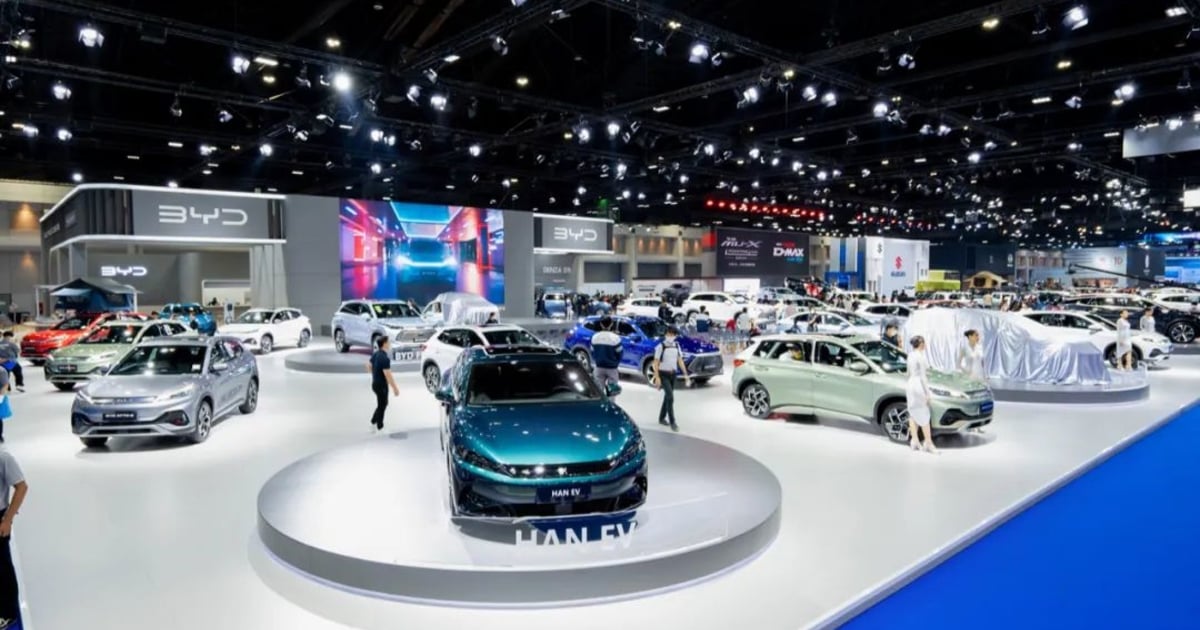
SHANGHAI – Vehicle price cuts initiated by Tesla Inc. in late 2022 have developed into a full-blown industry pricing battle that is engulfing nearly all automakers operating in China.
The heightened competition at home is now prompting Chinese automakers to step up the search for new growth opportunities overseas.
Just this month, several domestic automakers either started constructing assembly plants outside China or disclosed intentions to do so.
BYD Co., China’s largest electrified-vehicle maker, broke ground on March 10 for a factory in Thailand. The plant, due to launch output sometime next year, will build up to 150,000 vehicles annually after reaching full capacity.
On the same day, Hozon New Energy Vehicle Co., a Chinese EV startup, kicked off construction of a Thailand plant. Hozon expects the factory to start production in early 2024 witg initial annual capacity of 20,000 vehicles.
Both companies plan to build right-hand-drive vehicles in Thailand for the local market as well as other Southeast Asia countries.
Changan Automobile Co., a state-owned company listed on the Shenzhen Stock Exchange, this week released memos of recent meeting with investors, which show it also plans to construct a factory in a Southeast Asian country.
Changan executives didn’t identify the country in the meeting. But they said the factory is expected to begin output before 2025, according to the memos.
While BYD, Hozon and Changan are racing to build vehicles locally for key Southeast Asia markets, GAC Motor Co. has cast its eyes on India.
On March 12, GAC disclosed remarks its president, Feng Xingya, made the previous day at an interview with a Chinese media outlet. During the interview, Feng said he would visit India “as soon as possible.”
Lacking sufficient oil resources, India needs electric vehicles, Feng noted. By producing locally, it would allow GAC to adapt products for the Indian market, Feng added, without elaborating on the company’s plan to expand into the market.
SAIC Motor Co. has long been a leading vehicle exporter among China’s automakers. The state-owned company said its overseas sales surged 32 percent to some 160,000 in the first two months of the year.
SAIC, which has assembled MG cars in Thailand and India for years, appears to be in no rush to build more plants outside of China. But the company has found an effective way to sustain export growth.
SAIC is the first Chinese automaker to build its own fleet of ships to transport vehicles in and outside China.
On March 15, its transport subsidiary, SAIC Anji Logistics, opened a new shipping route to transport 1,000 MG cars from a plant in Ningde, a port city in east China’s Fujian province, to Mexico via the Mexican port of Lazaro Cardenas.
To support SAIC’s exports, Anji Logistics said it plans to expand its fleet of ocean liners to 19 in the near future, up from nine now.
Following SAIC, Chery Automobile Co., another major Chinese vehicle exporter, and BYD started establishing their own ship fleets in late 2022.
With vehicle exports spiking 54 percent to top 3.1 million, China overtook Germany in 2022 to become the world’s second-largest vehicle-exporting country, according to the China Association of Automobile Manufacturers.
It remains uncertain whether the rebound in China’s auto market can continue this year after Beijing phased out a decade-long subsidy program for EVs and ended a short-term tax cut on gasoline vehicles at the end of 2022.
But China stands a good chance of maintaining growth in vehicle exports as red-hot competition at home spurs domestic automakers to accelerate their push overseas.